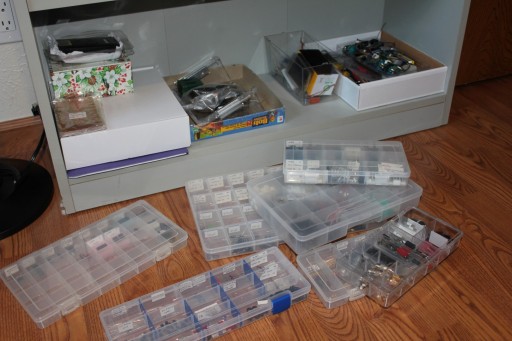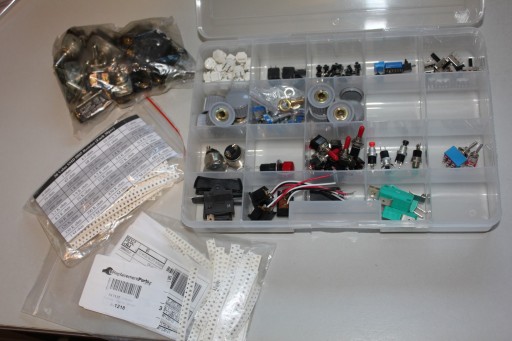This is a step of looking for an idea or for the purpose of what a board should be doing. You will likely know what you need and then build a suitable board. I needed to build something useful so I can look forward to it once it was done: I wanted to be able to interact with it but also use parts that I already have at home.
In my parts bin, I found a fairly standard LCD display that I got with an Arduino board. It can display 16 characters in 2 rows. This should be a good display device to use.
A couple of pushbuttons are definitely a must for any interactivity as well as a few LEDs: can’t do without mandatory blinking lights!
Digging through my parts I’ve found a DS18B20 temperature sensor, a simple 1-Wire device, so I added it in.

I wanted to use the Atmel SAM3N1 CPU which I already ordered from DigiKey. This quite powerful MCU needs a JTAG to program it. The MCU has a number of built-in peripherals including a UART (“serial port”) so I also wanted to use those pins to communicate through the serial interface.
After adding needed parts in the power supply circuitry, pin headers, test pins, and so on, I felt that was complex enough for the scope of this project.

The final rough idea for a board quickly took shape: it should have a couple of buttons for user interaction, it should display temperature read from a sensor and to make it more interesting, display a random fortune (do you remember that old ‘fortune’ Unix application?).
That done, let’s start creating schematics!


